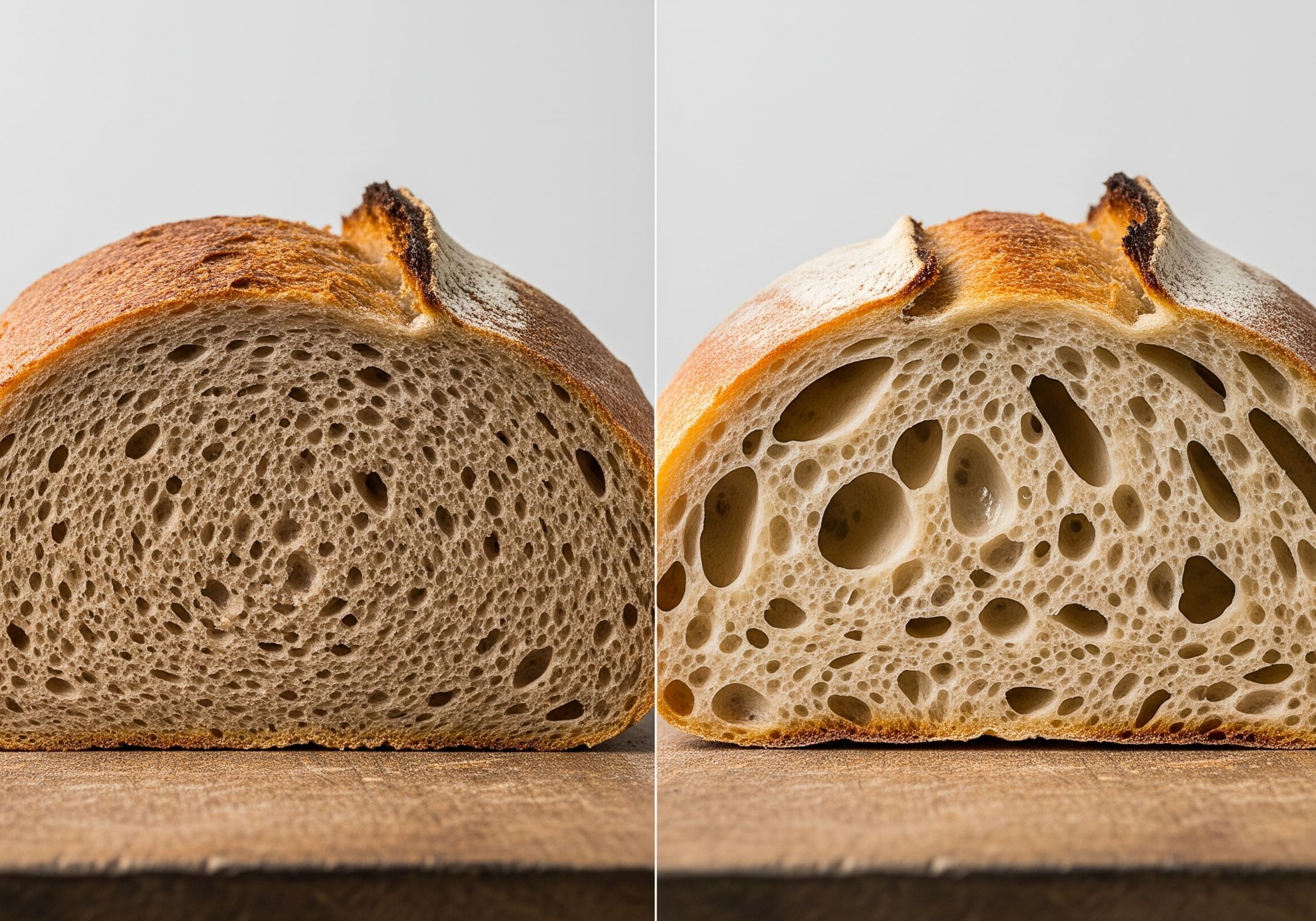Troubleshooting Sourdough Problems
A guide to diagnosing and fixing your bakes.
Baking sourdough is a rewarding process, but it can be frustrating when your loaf doesn't turn out as expected. The good news is that every "failed" loaf is a learning opportunity. The crumb, crust, and shape of your bread are all clues that can tell you what to adjust for next time.

Diagnosis: This is the classic sign of under-fermentation. The yeast didn't have enough time to create the gas needed to open up the crumb.
Solution: Extend your bulk fermentation time. Pay close attention to your dough temperature, as a colder dough needs significantly more time. Use a tool like CrumbScience to get a more accurate prediction of the ideal fermentation duration based on your specific conditions.
Diagnosis 1: You sliced it too soon! The internal structure needs several hours to cool and set. Slicing into a hot loaf will always result in a gummy texture.
Diagnosis 2: If you waited for it to cool, this can also be a sign of under-fermentation, where the gluten network wasn't developed enough to support the structure, or your starter was not active enough.
Solution: First, be patient and let your loaf cool completely (at least 2-4 hours). If the problem persists, focus on using your starter at its peak activity and potentially extending your bulk fermentation time.
Diagnosis 1: Over-fermentation. If you let the dough bulk ferment for too long, the gluten structure begins to break down and can no longer contain the gas, causing it to spread outwards.
Diagnosis 2: Under-developed gluten or poor shaping. The dough lacked the necessary strength or surface tension to hold its shape.
Solution: Reduce your bulk fermentation time. Also, focus on building strength with extra sets of stretch-and-folds and practice shaping to create a tight "skin" on your loaf.
Diagnosis: Your baking surface (the bottom of your Dutch oven) is too hot and is scorching the loaf before the top has time to brown.
Solution: Place a baking sheet on the rack directly below your Dutch oven. This will deflect some of the direct heat from the bottom of your loaf. You can also place a few ice cubes in the Dutch oven (next to, not on, the dough) when you start baking to create more initial steam, which can promote a more even bake.
Learn From Every Loaf
Use the "Notes & Photo" feature in the CrumbScience history tab (Pro feature) to log your results. Tracking your observations is the fastest way to improve.
Start Tracking Your Bakes